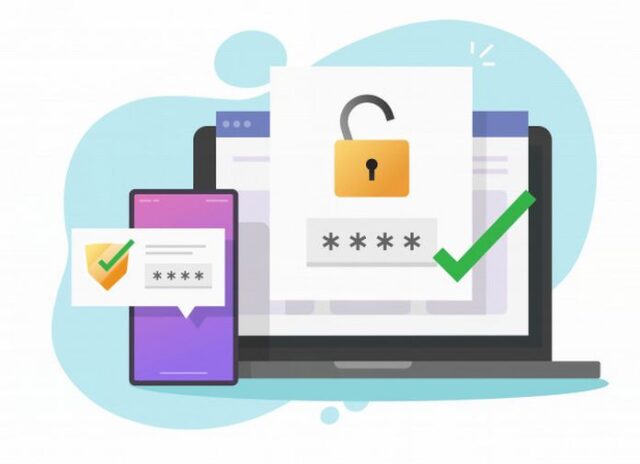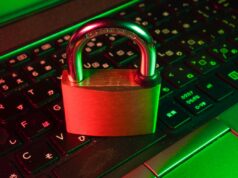
With the dramatic rise in breached data, 2024 has been a remarkable year of success for cybercriminals. Countless reports on cyberattacks provide plenty of examples, from the breach at Microsoft that exposed 200 million customer records to the 500,000 Zoom account credentials that went on sale on the dark web. YouTube, TikTok, Mashable, Spotify, and many other businesses saw their user account details compromised, too, during the year.
Needless to say, this represents a disproportionate level of security threats to all online users. Whether you have social media profiles, email accounts, or online shopping and banking access, your digital accounts could face security vulnerabilities when you least expect them. So, protecting them is a non-negotiable priority if you intend to keep them safe. That’s why in this article, we’re going to explore a critical security measure that every online account holder needs: two-factor authentication, more commonly known as 2FA.
What is two-factor authentication?

“2FA refers to any process that verifies your identity through two approved factors” explains Maria Shishkova in a OneRep article. In other words, with two-factor authentication, your online accounts will take you through two levels of identity verification before providing you access.
For instance, if you’ve been accessing your Gmail account with just a password all this time, you can set it up for an additional factor to verify that it’s you who’s asking permission to check your mailbox.
But, what’s wrong with using just a password?

Do you really need two-factor authentication? Besides, remembering passwords is challenging enough for many people. So, isn’t 2FA just adding an extra hassle to the account access process?
The answer lies in some of the challenges already faced with password security. According to a Comparitech article, 59% of people include their name or date of birth as part of their passwords, and 43% share login credentials. And Veronis studies reveal that more than half the Americans are reusing passwords, and a staggering 83% are using weak ones. And these are responsible for 30% of ransomware attacks, making weak credentials the third-highest risk factor for experiencing such malicious infections.
Clearly, password hygiene is a challenge for many people, and that’s a blessing for cybercriminals. The fact is, they are hard to remember and hard to protect. Although tools like password managers are commonly available today, many individuals are still not making enough use of them. And the result is often weak and easily guessable passwords and poor password practices such as using them across several personal accounts and sharing them with others.
To make matters worse, passwords are easy to steal, too. Phishing attacks are a common strategy used by malicious actors to steal account credentials. For example, they could use phishing emails in the guise of your bank and deceive you into divulging bank login details. Or they could impersonate an online retailer and trick you into revealing your shopping account credentials.
And the consequences of such a data breach could be brutal.
Studies show that 4 in 10 Americans have faced a breach, and 47% of them result in financial loss. But the real cost of compromised personal data could take a long time to emerge and might take various forms. Besides, a criminal could commit countless crimes with your personal information. For example, if they hack into your bank account, they could make purchases and transfer funds. With access to your email account, they could launch phishing attacks on your closest friends and colleagues using your email ID.
How can two-factor authentication help?

2FA can help you overcome many of the obvious concerns surrounding single password security. Here are some of the most common benefits of having two-factor authentication.
● Unlike the typical password, this second factor would not require you to memorize extra credentials.
● Since non-biological factors are instantly generated, they can eliminate the risks attached to reusing the same verification factor for multiple accounts.
● They are not written or saved anywhere and, therefore, often difficult to steal. They would usually involve authorizing each login attempt with a new or unique authentication factor. This also makes them unshareable.
● Non-biological factors are typically random and valid only for a limited period. Unlike passwords, even you wouldn’t know them until they are generated. This makes phishing attacks ineffective.
● They are highly versatile, and you can set them up for a range of personal accounts, from emails to social media accounts.
Moreover, reports on the effectiveness of two-factor authentication have been promising, too. For instance, during research conducted with New York University and the University of California, Google found that a simple text-based verification prevented 100% of bot attacks and 96% of phishing attacks. Microsoft confirms a similar success rate. Its studies show that 2FA could prevent 99.9% of automated attacks.
Two-factor authentication methods

There are 3 common types of authentications in use today. These involve data you know, such as passwords and security questions, devices you own like phones or USBs, and biological verifications such as facial recognition and iris scans. Two-factor authentication often includes one or more of the latter two types.
Here are the most frequently used verification techniques for 2FA.
● An authentication code sent via SMS or email.
● A USB or similar device that automatically generates a random token every few seconds.
● Biometric verification, for example, using a fingerprint, voice recognition, or iris scan.
● Software or app, which generates a random token that’s valid for a limited time.
To recap
The bottom line is, we’re living in a digital age where threats to data are at an epic level, and protecting personal information has become a critical need of the hour. So, adding an extra security barrier with two-factor authentication will not do any harm. In fact, it could shield you from many security vulnerabilities with a more robust first line of defense to keep data threats at bay.












